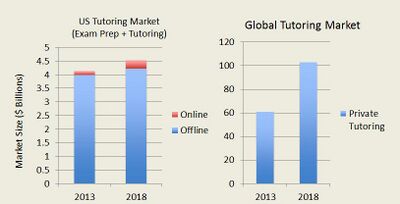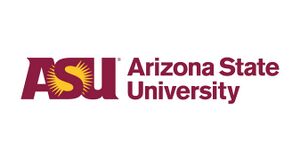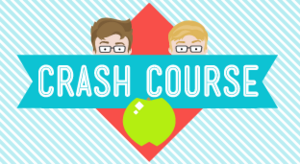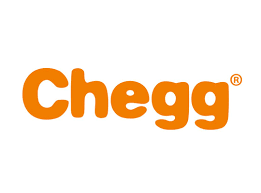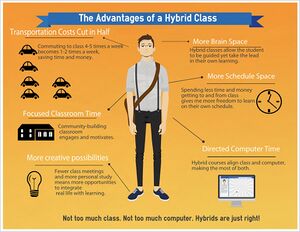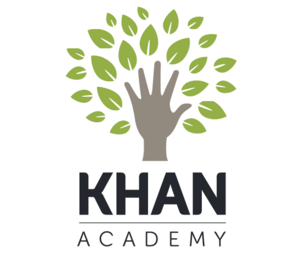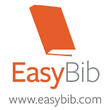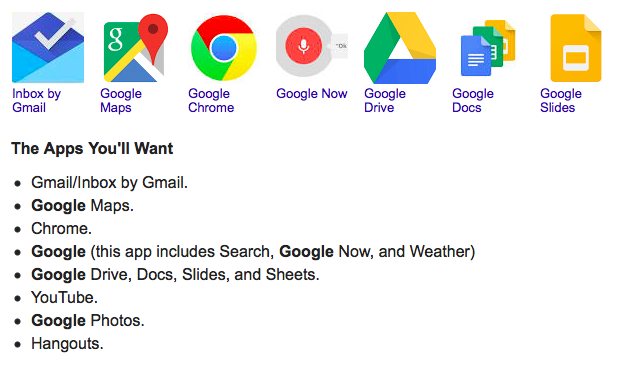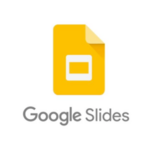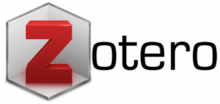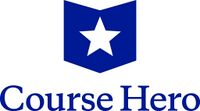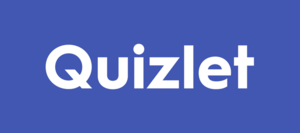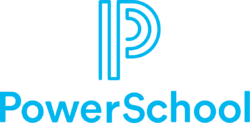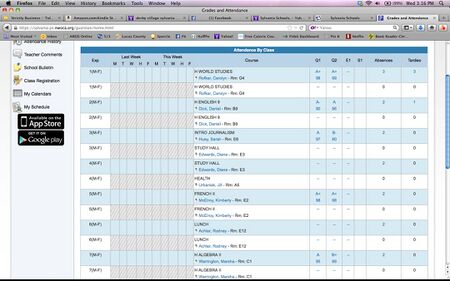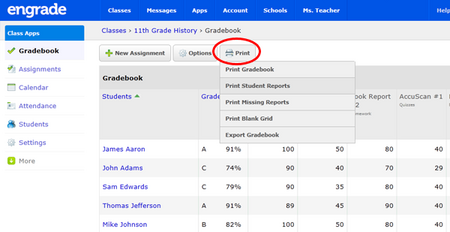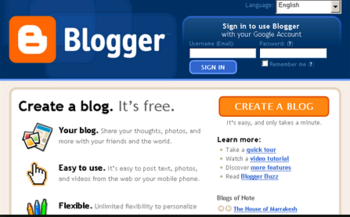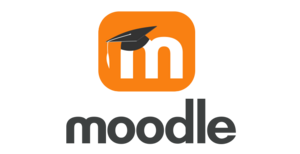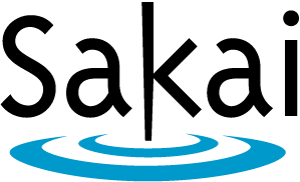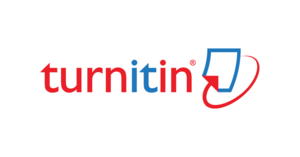Introduction
New Media has revolutionized the way we view education. As we conduct more and more of our daily activities online, we develop a more comprehensive understanding of education in all aspects. Students are now able to receive a degree online from the comfort of their own homes. Teachers can post and grade assignments electronically and use programs to detect plagiarism as well. New media has even revolutionized the way students receive help in the form of tutoring. The online tutoring market is predicted to increase twofold in the next ten years, as it is solving many of the problems seen in face to face tutoring, including time, money, and anonymity.
The introduction of new media and new technologies has also created problems in the classroom, as older aged teachers struggle to adapt to their curriculum and new innovations. Educators have to find a way to balance traditional learning techniques with skills that will be relevant in the real world. It has also become increasingly difficult for students to pay attention in the classroom and as education is becoming increasingly integrated with new media, it has become more and more difficult for students to separate their social life from their educational responsibilities.
While there is growing evidence that social media is increasingly supporting informal learning at home and in the community and that informal learning is becoming a vital element of education for learners of all ages, research has also revealed that new media can help integrate formal and informal learning in higher education contexts.
History
Over the years, methods and approaches have been developed to enhance the online learning experience, which resulted in a significant increase in students' preference to pursue their degrees online. The history of online learning goes even beyond the history of personal computers. The first distance learning course was established in Boston in 1728, with lessons sent by mail. In 1922, Penn State began offering courses by radio, and by 1925 over 200 colleges and universities had been granted broadcasting licenses. By 1982, CALC (Computer Assisted Learning Center) established a learning center for adults. When the first personal computers became commercially available, in the early 1990s, course programs and degree programs were not yet easily available. In fact, it wasn't until 1994 that the first fully online curriculum was introduced by CALCampus. People were only beginning to understand the complex technology behind the PC and the internet was still in its developing stages. Eventually, many educators and educational institutions started offering education programs online. Some of the earliest online courses offered were developed by the British Open University, the New Jersey Institute of Technology, and the University of British Columbia.
Online learning is also referred to as computer-supported collaborative learning because online courses often involve some sort of collaborative effort where different instructional methods are developed to encourage students to work together. This has become more and more evident as virtual classrooms, online chat, discussion boards and even social media or social networking sites become a regular part of the learning curriculum. Today, online learning has become so popular due to the numerous benefits. Especially the flexibility online classes offer to those who do not have the time to attend traditional classes. Other benefits include cost and accessibility, as all course materials are available online, and enrolled students do not have top have to pay for transportation to get to class. Currently, 96% of traditional universities offer courses online. [1][2]
Online Tutoring
Just decades ago, there was no such thing as a paid personal tutor. Those privileges were reserved for either the extremely wealthy or those with learning disabilities. Despite this fact, the U.S. always excelled above their global competitors academically. In the last few decades, however, America has begun to fall behind its academic competitors, who have better embraced the online tutoring industry. As a result, many parents see tutoring as absolutely necessary for their children's academic success. Because of this growing belief in the value of tutoring, the global tutoring market has soared, and over a span of several years, has become a $102 billion industry.[3]
Tutoring demand is predicted to grow even more, as parents and schools are beginning to fail at preparing students for college and the workforce. According to Virtual Strategy Magazine, 60% of students going to community college must take at least one elementary class. However, most students attending said colleges cannot afford the cost of a private in-person tutor. Moreover, many parents of younger students, whose lives are filled with multiple extra-curricular activities, find in-person tutoring to be inconvenient, expensive, and limited in the range of subjects compared to the wide range of tutors found online. Today's generation of students also prefer online tutoring because it provides the anonymity factor that prevents peers and teachers from knowing they need extra help.[4]
Tutorspree
Tutorspree was a platform launched in 2011 to help parents find tutors and tutors find students. The site worked by collecting local tutors who have education credentials and putting them in a searchable database. For parents, the process would begin by finding the tutors closest to them by entering their zip code on the main page. They could then look through tutors based on price, distance, and subject area. This way, the tutors they hired would be convenient for them and they have the freedom to research the tutor before allowing them to work for them and help educate their child. Parents could then contact the tutor and even pay for the services using the Tutorspree platform. Afterward, parents are even leaving feedback so that tutors can learn from their previous experiences. Through feedback, tutors are able to take constructive criticism to better themselves. Prospective tutors would apply to the site and screened for the appropriate credentials. If they qualified, tutors were able to set their own rates.[5]
Despite high expectations, Tutorspree was forced to shut down mid-2013. The reason for the shutdown remains unclear. Some sources report that it was a lack of funding. CEO Aaron Harris, however, released the following statement on the Tutorspree blog:
Ultimately, Tutorspree was not built to deal with the problems it would inevitably face in the online tutoring world. For one, in order for an online company to be successful, it has to be discovered by new customers every day. Tutorspree simply wasn't attracting enough traffic to their website. Another problem is "student poaching." Basically, like most tutoring platforms, Tutorspree relied on commissions paid by tutors for every session set up through the site. However, most tutors could easily make contact with their clients after just one session, which means the website would have virtually no repeat customers. Finally, more and more websites, such as Knearn, are offering live tutoring, which is much more convenient, timely, and cost-efficient than in-person tutoring. [6]
SocialBrew
SocialBrew is a start-up educational tech company that launched in December of 2013 under name Knearn and was renamed in March of 2015. The website aims to be a student platform that will offer much-desired services for high school and college students alike. This includes mentoring and tutoring, while also providing a newsfeed that displays stories and interviews with students regarding college life. The mentor and tutor base that Social Brew provides includes top-of-their class students in addition to mentors with notable internship and full-time job offers that are in high demand in the college environment. Social Brew platforms aim to overcome the anxiety that comes with approaching a professional or alumni on certain social networking sites by uniting their experts will the sole mission of helping students. Users can ask questions anonymously, further catering to more apprehensive users. Ultimately, Social Brew hopes to put students on the path to the right college, career, and when tutoring launches, to the high grades that will get them there. This new start-up tutoring website is also a great way for people who wants to offer their knowledge for free. [7]
Google Helpouts
Google Helpouts was a service from Google that allowed anyone whose native language was English and who passed Google's screening could open his own tutoring channel online. People with expertise in various topics offered live help through Google's chat and video conferencing. Topics that people could search through, not only included academic disciplines but also cooking, fashion, and beauty. Users of Google Helpouts were able to open their 'help-out' channels and charge for their help based on time or by a session. Tutors could set up a schedule of time when they were available for tutoring. Helpouts was officially shut down on April 20, 2015. [8]
Online Universities
Ivy Leagues
When you think of Ivy League, the first thing that comes to mind is the expense and exclusivity of attending such a university. However, more and more professors are putting their lectures online for free. In 2011, Stanford computer science professor Andrew Ng put his class online, attracting over 100,000 students. To reach that many students in traditional settings he would have to teach his usual class for 250 years. In addition to lecture videos, this class included quizzes, questions and answers, a grade and a certificate of completion. In an interview with NPR, Ng discussed the reasons behind his decision to take his classes online.[9]
Brown, Columbia, Cornell, Dartmouth, Harvard, Princeton, UPenn, and Yale all offer free online courses. Brown offers a number of online programs, including pre-college programs designed for college-bound high school students. The university's "So You Wanna Be A Doctor" program teaches medical science and allows students to evaluate virtual patients. It also discusses the medical school admissions process. Brown also offers degree programs that take anywhere from 15 months to 4 years to complete. Cornell, meanwhile, offers professional development certificates and individual classes through their e-Cornell learning program. The certificates focus on the following areas: human resources, hospitality and food management, leadership, project leadership, financial management, healthcare, marketing, and management essentials. These programs usually consist of approximately 5 professional development classes. Most notably, Yale University offers courses in over a dozen subjects through the Open Courseware movement, which is designed by MIT. The movement allows colleges and universities across the world to put their courses online so that individuals could access them worldwide and at no cost. [10][11]
At a cost, Harvard Business School offers online courses under the name of HBX, which is another way of accessing a level of education beyond the classroom. Geared towards business, it offers a wide range of courses, which are all online, from financial accounting to data analytics.[12]
University of Phoenix
The University of Phoenix is a completely online university. On its website, we can see that it is accredited by the Higher Learning Commission (http://hlcommission.org). A comprehensive evaluation is scheduled for 2016–17, and the next Reaffirmation of Accreditation is scheduled for 2022–23. This has opened up its doors to many adult learners with scheduling conflicts. Individuals who otherwise would take time away from work or their families in order to complete their college education can now fully enroll, pay, and attend full-time undergraduate programs online. This is not the same as an institution that offers online education as many four-year colleges around the United States currently do. This is a completely online university where no requirement to have a physical presence for a college education is necessary.
History
The University of Phoenix was founded by John Sperling in 1976. The main location is in Tempe Arizona. Sperling started his university with only eight adult students, who had already some college credits but were pursuing to get high education. After ten years later, the University of Phoenix had 6,000 students more than many colleges in America. However, Sperling's ambition was to make his university even bigger. In 1989 Sperling started to offer online classes for the first time. Five years later the University of Phoenix had over 100,000 students.
Programs
The University of Phoenix provides Associate, Bachelor’s, Master, Doctoral degrees, and certificate programs. The Colleges within the University of Phoenix are the college of Education, Health Professions, Security and Criminal Justice, Humanities and Science, Social Sciences, Information Systems, and Technology. The schools are the school of Business, Nursing, Health Services Administration, and Advanced Studies.
Admission Requirements
Requirements to be admitted are to have a high school diploma or GED, be at least 16 years old at the time of application, have access to an organizational environment if its program requires it, be a U.S citizen or permanent resident or hold a validly approved visa. Complete all other required forms for admission as long submit official test scores and official transcripts.
For the Master's degree, the student must have an undergraduate degree from a recognized institution, have a cumulative GPA of 2.5 on a scale of 4, plus other documentation. The estimated tuition for a bachelor's degree in technology is around $67,000.
Western Governors University
Western Governors University, abbreviated WGU, is a private, for-profit school. It is completely online, with its main office being located in Salt Lake City, Utah. WGU offers a variety of programs on business, information technology, health, and education; those who are already in a profession--such as teachers, hospital administrative staff, and accountants--would find their programs to be especially helpful, as they were crafted primarily for these types of people. Those who are earning Bachelor's and Master's degrees for the first time have shown satisfaction as well. Their programs are competency-based; if one is able to complete a course within one week or even a single day, they are freely allowed to. Some have reportedly been able to earn their degrees from Western Governors University within only two-three months of work.
Western Governors University accepts ACE credits; if one wishes to complete courses in more of an affordable fashion via StraighterLine, Study.com, Sophia Learning, and others prior to enrolling, they are able to.
You earn your degree through demonstration of skills and knowledge in required subject areas through a series of carefully designed assessments. You’ll take tests, write papers, and complete assignments. But rather than focus on seat time or credit hours, we make sure you graduate as a highly competent professional.
More information on their education approach could be found on this page.
Arizona State University
Arizona State University, ASU, is ranked number 4 in the United States in online education and they are ranked number 5 in the country for online MBA programs. They offer a variety of fields with over 140 online degree programs. They offer 6 different start dates so it makes it incredibly flexible for students who work full-time or part-time. There are over 30,000 students currently enrolled in this innovative program. On top of their credibility, they offer the same tuition for those who live in the state and out of state. They also have one of the best online criminal justice programs in the country. To request more information, you can visit this page.
University of the People
In this world, there are a hundred million students that cannot go to any university no matter how motivated, small or intelligent. A hundred million students right now don’t get to go to any classrooms because they have no money, it’s too expensive, or there is no space for them. This is the sad reality of our world where money is holding people from quality education.
Shai Reshef made the possible happen by figuring out a way to give a hundred million people from all around the world an education. He created a university called the University of the People, the world’s first ‘almost’-free university. [13] Reshef made it possible by having all classes online, professors volunteer, tuitions are not charged, textbooks are free online, and they only charge $100 per exam (if one can afford). It is also fully accredited just like any American university. It is designed to work for everyone as there are 7,000 professors and academics (some from Harvard and Columbia University) that have reached out to volunteer to the university. Foundations have also donated money to contribute to making the university more successful. Syrian refugees, genocide survivors, homeless people, stay at home moms, and many others who couldn’t afford education from 200 countries joined his university. [14]
After educating 15,000 students, Reshef’s goal is to build a system that works for 100,000,000 more people. Reshef's vision is to make education free for everyone and the rest of the world volunteered to help him make it a reality. They are making education a human right and not a privilege. Reshef has stated, “if you educate a person it can change a life, but if you everyone it’ll change the world”. Not many people think big but those who do are the ones that truly change the world for the better. [15]
Online Learning
Online Class in Colleges
When we talk about schools or colleges, the only thing that comes to our mind is in-person learning where students interact with instructors in the classroom. But things have changed a lot in education systems in this generation. New Media plays a very big role in the education system. There are two ways students can learn education very effectively - one is without going to the classes and can learn all courses through online class and the other way through hybrid class. Online [16]classes are where students do not need to go to class, the time for online classes are very flexible for students and they can work on their own pace. There are the new media websites which instructors use to post lectures and course-related material so that students can learn about the particular course. But there are advantages and disadvantages to online classes.
The advantages are [17] (1) career advancement and hobbies, (2) flexible schedule and environment,(3) lower costs and debts, self-discipline and responsibility, more choice of course topics [18] (4) less intensity, (5) easier attendance, (6) easier access to teachers, (7) location, (8) the comfort of your home, (9) easily to focus, (10) you can keep your job, (11) easier to fit learning your day and (12) learning tech skills.
The disadvantages are[19] (1) online education requires immense self-discipline, (2) lack of direct interaction with your teacher, (3) lack of company form other students, (4) the workload is bigger than in traditional education and (5) the online learning institution might not be accredited.
Zoom
Zoom Video Communications can be used for distance education. The global eLearning market is estimated to increase from $165 billion to over $240 billion by 2023.[20] As new media and technology continue to develop, there will be an increase in technology being used in educational formats. There are a lot of benefits to education from the use of Zoom in distance learning such as reduced training cost, increased productivity, standardization, real-time access to information, and ongoing access to resources.[21] Zoom has numerous features that facilitate teaching. It gives educators the opportunity of splitting students into groups for a set amount of time, the ability to share their screens with students, and the ability to record the entire lecture for students who might have missed it. Due to the Coronavirus Pandemic of 2019-2020, Zoom has strengthened its privacy features by adding the waiting room. Its purpose is for the host of the meeting to allow only those they deem a participant into the lecture. They had to add this feature because hackers were entering Zoom meetings for the sole purpose of disrupting it. Another important feature of Zoom is that it allows for a two-way video and audio communication, unlike other eLearning platforms that only allow one-way video and audio communication.[22] The two-way video and audio communication make it easier for educators to host virtual office hours as well. Zoom is only one example of the many new technologies used to advance education.
Alternative Learning
Youtube has become more than just simple video sharing among users, companies, and marketers but it's a useful tool for online learning as well. Youtube is part of the second generation web development, that allows users to comment, ask questions, and communicate with a person who uploaded a video. Anyone who has questions about school education, the recent gadget in the market, how to bake cupcakes, how to fix a sink or anything; users can easily find it on Youtube. Incredibly the website indirectly promotes innovations, creativity, self-efficiency among its viewers.
YouTube is a great way to learn because if something is hard to understand, YouTube has videos of professors explaining it step by step. This is an extremely handy resource, especially for people that are visual learners. There are hundreds, can even be thousands of videos explaining things in an understandable manner.
CrashCourse is an educational channel on YouTube started by brothers Hank and John Green. Green brothers were originally known by their blog style YouTube channel VlogBrothers. CrashCourse channel features educational videos on topics starting with history hosted by John, biology hosted by Hank expanding to philosophy, psychology, U.S government and politics, economics, physics, astronomy, and chemistry that are hosted by various people. As of May 2016, the channel has over 4 million subscribers and videos receiving over 480 million views. CrashCourse is so popular because of its fun, fast paste videos with cool animated clips, produced by Thought Cafe, gives explanations in simple language that are boring to read from a textbook. Green brothers, also, host few other Youtube channels like SciShow and SciShow Space, Mental Floss, and associated with several other channels.
Chegg
Chegg is a company from Santa Clara, California that was founded in 2005. It is an educational website where students can go for help. They have tutors that tutor students on any subject. If students are having problems with homework they can go on Chegg and request a tutor. Tutors are available 24/7 so students can request a tutor at any time of the day. You can also get textbook solutions and for $14.95 a month. The subscription can be canceled at any time. The textbook solutions show step-by-step solutions on how to solve a problem. Chegg also allows people to sell, rent, and buy books. The books on Chegg are usually cheaper than other websites because the books are used. This can help students save tons of money on books.
College Level Examination Program
College Level Examination Program--in short, CLEP--is a set of computer-based standardized tests developed by College Board; same institution behind PSAT, SAT, and AP. These exams evaluate students on their knowledge of various college subjects; upon receiving a passing grade, students are able to forward their results to their home school and obtain semester credits. As for how many credits could be transferred--it all depends upon the school's policy. Empire State College of SUNY is a major supporter of options like this, allowing more than 90 alternative credits to be transferred, saving three years of workload. CLEP is a more affordable way of completing college courses in comparison to taking them in-person.
Subject Areas
Here is a list of all subjects covered by CLEP as of 2017.
Composition and Literature
- American Literature
- Analyzing and Interpreting Literature
- College Composition
- College Composition Modular
- English Literature
- Humanities
World Languages
- French Language: Levels 1 and 2
- German Language: Levels 1 and 2
- Spanish Language: Levels 1 and 2
History and Social Sciences
- American Government
- History of the United States I
- History of the United States II
- Human Growth and Development
- Introduction to Educational Psychology
- Introductory Psychology
- Introductory Sociology
- Principles of Macroeconomics
- Principles of Microeconomics
- Social Sciences and History
- Western Civilization I: Ancient Near East to 1648
- Western Civilization II: 1648 to the Present
Science and Mathematics
- Biology
- Calculus
- Chemistry
- College Algebra
- College Mathematics
- Natural Sciences
- Precalculus
Business
- Financial Accounting
- Information Systems
- Introductory Business Law
- Principles of Management
- Principles of Marketing
Coursera
Venture-backed startups are now breaking their way into online learning. Coursera is a for-profit, educational technology company that offers massive open online courses (MOOCs). It was founded in 2012 by Stanford University professors Andrew Ng and Daphne Koller. Accredited universities such as Stanford, John Hopkins, Duke University, and many other well-known universities are posting classes online for free. classes such as Calculus, Chemistry, Algebra, and engineering are available for people to attain certification. The business model for Coursera is to provide free accessible courses for people to learn from. The company generates revenue by offering certification classes that students have to pay a fee for. Coursera received a valuation of 22 million dollars from venture capital, but many universities are still skeptical about joining the masses to provide online courses. It was reported that 70,000 students are signing up of approximately 200 courses [23] .
Duolingo
Duolingo is a free online language-learning website that started on November 30th, 2011 by Luis von Ahn, Ph.D., and Severin Hacker, Ph.D. and is currently headquartered in Pittsburgh, US. Duolingo's slogan "Free language education for the world" effectively sums up their entire mission statement; since its conception, the website currently has over 100 million registered users and - according to various studies conducted by both Duolingo and other independent sources - claims that approximately 34 hours spent on the website equates to 1 semester of a university language course.
Its current business model is focused on a crowd-sourced model where various organizations post content where members of the community can translate the posted content and/or vote on the best translations; the organization pays to post their content on Duolingo and the community is given the opportunity to improve their language skills while simultaneously supporting the website itself.
Another way Duolingo makes money is through corporate partnerships and investments. On October 14th in 2013, Buzzfeed announced it will have Duolingo users translate Buzzfeed content into new languages. Buzzfeed chose to partner with Duolingo in an effort to expand its "global footprint," but also hired multilingual editors to ensure content creation in foreign languages as well, besides Duolingo's translating. [24]Additionally, in 2016, Duolingo CEO Luis von Ahn revealed Duolingo possessed $83 million USD in investments from global firms, including Google.[25]
Duolingo remains free for all users and has 10 times as many active users than any other language learning app. Duolingo is the largest educational platform in the world, available to people in 21 languages. That being said, operating costs are high for the company. CEO Luis von Ahn admitted in 2016 the company was searching for "viable options" to monetize the app without hindering users, and pleaded for consumers to bear with the experimentation process as he tested different methods of garnering revenue. Duolingo spends $42,000 USD a day on servers, salaries, and other operating costs. The company as of 2016 had failed to break-even in costs and revenue.[26]
Many Duolingo users expressed interest in the company selling physical objects in order to subsidize its costs. A major suggestion by users was Duolingo apparel. To this suggestion, Duolingo's CEO stated the company would need to "sell as many shirts as Banana Republic in order to support the entire platform." In a larger context, the CEO said he does not believe many of his users' suggestions to be scaled large enough to make any significant impact in revenue or costs. He also admitted he hoped the company would stay the world's largest, and free, language education platform - not a clothing retailer.[27]
Duolingo provides the user with varying levels of suggested time commitment with their courses in the form of "XP" - where each lesson counts for 10 "XP"; depending on how much time a user is willing to devote to certain language lessons, the user must maintain a certain minimum (e.g. 10xp, 20xp, 30xp, 40xp, etc.) in order to remain on a daily track to earn a currency called Lingots. Lingots can be traded in for various rewards such as new, and otherwise exclusive, language lessons (e.g. Proverbs, Romantic Phrases) and can be an incentive for the user to continue their language education. Furthermore, Duolingo automatically tracks the user's progress in terms of a rough percentage of how much he or she has learned of the language based on how many lessons the individual has completed; the option to directly link it to your professional LinkedIn profile also exists.
Duolingo teaches the user by utilizing a straightforward approach to language learning - by default, the lessons are composed of large sections relating to a topic such as 'People', 'Places', 'Verbs', 'Emotions', etc. Within each section, they are further broken down into smaller lessons in which include portions of the lessons. For example, if one decides to learn about Verbs, then the individual would then see the section divided into anywhere from 1-10 lessons and each lesson would include a subset of words to learn (e.g. the words 'run', or 'jump'). The topic lessons form a ladder in which the individual must complete in order to advance to the next section of topics, which generally increase in complexity and difficulty.
Furthermore, Duolingo provides an opportunity for the community to create new languages that were previously unavailable to learn; users who are fluent in a given language are allowed to contribute to the new language course with the intent of eventually becoming a fully functional and cohesive language course. For example, languages such as French, Italian, etc. are both readily available to all users to learn whereas a language such as Korean or Hindi is still in development stages where users are constantly contributing to the course and thus are currently otherwise unavailable to the masses.
AccountingCoach
In 2003, Harold Averkamp, CPA, MBA, and his team took advantage of new media and introduced the AccountingCoach website. All available content on the website has been written by Averkamp, who has spent decades as an accounting instructor, accountant, and consultant for many organizations. Thousands of Internet users have found the instructional material that Averkamp provided on his website to be incredibly useful in their courses. The website’s main purposes are to “help people throughout the world learn, refresh, and deepen their understanding of introductory accounting and bookkeeping at no cost.”[29] Initially, AccountingCoach only offered users with free access to articles with topic explanations, study materials, practice quizzes, and sample tests. To help accounting students retain information and concepts better, AccountingCoach’s study materials included helpful activities such as vocabulary crossword puzzles, Q&A articles, and short transaction problems.[30]
After a few years, Averkamp introduced a premium version of the existing AccountingCoach option. AccountingCoach PRO includes everything that the regular version offers as well as bonus study materials. The premium materials that come with AccountingCoach PRO included sample tests, visual tutorials, business forms, and more. PRO Users were given the ability to track their progress when the feature was implemented in 2017. In the same year, a third version of AccountingCoach was launched named AccountingCoach PRO Plus. This newer version has all of the features of the other two options, and also allows users who have completed modules to obtain certificates of achievements. In order to earn certificates, users must score at least a 70% on each applicable certificate exam.[31]
Learning accounting concepts has been made easier thanks to new media and the Internet. Averkamp even states that people are able to increase their knowledge and confidence in accounting for almost no cost using the Internet.[32]
Hybrid Classes
Hybrid classes are courses that combine traditional face-to-face class time with online learning activities. The purpose of such courses is to take full advantage of the best features of both face-to-face and online learning. Rather than treating online learning as a supplement or add-on component to what is taught in the classrooms, a hybrid course is designed to integrate face-to-face and online activities so that they complement and elaborate on one another. There is no right or wrong definition of a hybrid class, but most instructors can agree on three components: (1) Web-based learning activities are introduced to complement face-to-face work; (2) "seat time" is reduced, though not eliminated altogether; (3) the Web-based and face-to-face components of the course are designed to interact pedagogically to take advantage of the best features of each.[33]
Hybrid classes are easy for both the professors and students to use. Normally there will be a link or website where professors can provide all the class materials for students to access in one place. Some of these materials include class notes and videos to help students learn. Professors can also include assignments and readings to the students to foster learning. This is easy for the students to use, as students can do assignments for the class at their own pace, and anywhere they choose.
Furthermore, there are no universal parameters that specify whether a course is a hybrid or not. Generally, courses in which fewer than 20% of learning content is online are more likely to be labeled as "web-enhanced" rather than hybrid courses. Most institutions require that courses labeled as "online" must occur 100% online and involve absolutely no face-to-face contact. Some such courses may, however, include orientation sessions, or ask students to take exams in class. This further blurs the line between hybrid, online, and traditional learning.
Some hybrid classes can be completely or fully online in which you can do a week's worth of work and learn all the material by yourself at your own speed. These classes may be difficult for people who haven't taken them before, but they can be your favorite type of classes once you get the hang of them. Since many people have a busy schedule with other priorities, hybrid classes enable people to conveniently learn while satisfying their other obligations. Hybrid classes can benefit both the professor and students. In my opinion, I enjoy taking online classes because I can work at my own pace and time.
Learning Management Systems
Learning management systems such as Moodle, Blackboard, Atutor, Eliademy and etc. have become immensely popular in universities in recent years as a means to distribute lecture notes and other course information, as a portal for students to upload assignments and check them for plagiarism, and as a chat forum where students can communicate with their lecturers, and with each other. These platforms allow for easy integration with social media services so that lecturers can push content automatically to apps like Twitter, Facebook, or LinkedIn.
Blackboard
Blackboard is an online tool that helps teachers and faculty post information and resources for students to access online. Teachers can create PowerPoints, Word documents, and pdf files outside of the platform and then upload them for their students to use. The platform is the largest education technology and services company in the world and has nearly 100 million users throughout the world. It is the platform that is used throughout multiple colleges, including CUNY. In addition to easily sharing files with students, Blackboard also allows the students in one class to communicate with one another by providing easy access to email addresses. Blackboard also allows teachers to easily upload grades for their students to see without having to meet in person. [34]
Moodle
Moodle is a learning platform created to be a single platform that allows teachers, educators, and learners to create personalized learning platforms in one place with security. A major advantage of Moodle is that it provides free services without any need to pay licensing fees. Anyone is allowed to create a learning space for commercial or non-commercial uses. It is also available in multiple different languages, more than 120 so that people all over the world can access the facilities and modify it so that it suits them in the best way possible. The platform can be modified to fit any size classroom, be it big or small and is compatible across multiple devices and browsers. [35]
Khan Academy
The Khan Academy is an online education platform available to all users. It is a free online class. It has become a revolution in education. <https://www.youtube.com/watch?v=vONn-vrtRiY&t=193s> The mission behind the Khan Academy is to give people a chance to experience education in a whole different perspective by offering free online education services. [36] The site provides hundreds of lectures, video tutorials, and personalized services that show how much a user has progressed. Lectures include courses from a wide range of topics such as economics, trigonometry, calculus, sciences, history, physics, and even computer science. [37] The more personalized features of the site help demonstrate how one has developed since the start of using Khan Academy. There are also badges that users can earn every time they complete an educational game. From second graders to people with degrees, Khan Academy provides global educational content to a diverse group of individuals. Along with free educational services, there is also a blog where users can find out about new competitions, class lectures, and new supporters.
[38]
Khan Academy was started by Salman Khan, a Harvard Business School graduate, who used Yahoo’s Doodle notepad to help his cousins in mathematics. He then started to upload videos on YouTube so his other family members can also watch and use it when they can. Other YouTube users, however, started to watch his videos and around the same time, he was working as a hedge fund analyst in the fall of 2008. With the financial crisis on Wall Street and around the world, he decided to quit his job and make his online education his main occupation and create Khan Academy. These videos are free but advertisements from YouTube are able to generate revenue for his non-profit organization. The academy is still growing and their goal is to change the education systems. [39] As of now, April 2014, Khan Academy on YouTube.com have 1,749,576 subscribers and 394,903,297 views. [40]
Online Supplements
Many college courses will have online materials and supplements to support and assist the students in their studies. Many times these websites are created for textbooks by major book publishers such as Pearson, McGraw-Hill Education, Scholastic, Wiley, and Cengage.[41] Teachers and professors can assign home works, exercises, quizzes, and even tests through these websites. This saves time for the teachers and helps them better prepare for course materials rather than grading numerous amount of home works. Many of these websites also have the online edition of the textbook, practice questions, video lectures, quizzes, flashcards, and many other study materials that can benefit the students. There are, however, problems with online testing and home works when students get together to try to do the questions together. Some teachers also give students a large enough time frame to do the exam and that enables the students to work together on one test and then move on to another exam. To prevent that, teachers would have to set a time frame that is only long enough to complete the exam and set it to the same time for each student. They can also have different questions as well.
New Media as an Educational Platform
As the trend of social networking grew bigger and bigger, many educational institutes have noticed the pattern and some even took advantage of it and turned it into an educational platform. Nowadays, many high schools and colleges instruct their students to use social networking for school work. In our time, micro-blogging sites are used as a forum to share content and thoughts, it encourages debate and peer involvement. There are also many instances in which individuals and teachers set up hashtags for specific courses in order to create an online discussion. Educators believe that when a student knows that his ideas and input will be reviewed by everyone in the class, they pay more attention to the content, grammar, spelling, and punctuation. There are also many educational social networking sites such as Computing ++, Edmono, EFL Classroom 2.0, Life Pup, and much more. Furthermore, the idea of social networking is the basis on which distance-learning models were built. Those models provide the students with an online classroom in which students can interact with one another, post their ideas and thoughts, and respond to their peers, just like on social networking sites. Early data that examined the use of social networking sites and social networking models in schools have shown that student participation has increased and that drop- out rate was reduced.
Saylor Academy
Saylor Academy, or otherwise simply referred to as Saylor, contains plenty of educational resources on their database who wish to enhance their or knowledge or add something new entirely to their knowledge base. They offer self-paced courses as well; people are able to learn new material from anywhere they choose, any time they wish. Some of their courses are approved by American Council on Education as well as Translating Noncollegiate Education into College Credit Recommendations (NCCRS) sponsored by State University of New York (SUNY), allowing students to earn academic credits upon successful completion. All of their content is free, but there is a small proctor fee when taking the final exam. https://www.saylor.org/
StraighterLine
StraighterLine is a learning platform providing low-cost online courses. Each and every one of their courses are evaluated by American Council on Education (ACE), enabling users to transfer their information to certain schools once they successfully complete a course for college credit. StraighterLine courses oftentimes take much less time to complete than traditional college courses, allowing students to save time on their degree. Colleges that accept ACE credits include SUNY Empire State, Utica College, DeVry University, Kaplan University, CUNY School of Professional Studies, and the University of Bridgeport. http://www.straighterline.com/
Study.com
Study.com provides online courses for people of a variety of ages. They include high-school and college-level subjects (few examples are Earth Science, Introduction to Psychology, and Human Anatomy and Physiology), and are evaluated by American Council on Education as well, making their credits eligible to be transferred to universities. Study.com is subscription-based; so long as one has an active membership, they are permitted to take as many courses as they wish, creating a path for students to earn more than a semester worth of credits within as little as a month, or perhaps even a week. https://study.com/
Udemy
Udemy is an online learning platform where more than 10 million students are taking courses in everything from programming to yoga to photography and many other courses. Most of the courses are taught by the expert in a systematic way so that the students learn the most of it. The good thing about Udemy is that every course is available on-demand so students can learn at their own pace and schedule. It is not only limited to students but also for those people who want to pursue their skills and knowledge. Many huge companies are letting their employees train through it.Udemy provides a large selection of courses and they all have their own prices. However, there are some special discounts and offers available accordingly and it would be a great time to purchase the tutoring program to develop skills. [42]
3P Learning
3P Learning is a global leader in online education. The website's suite of learning resources is designed for schools and families, covering mathematics, spelling, literacy, science, and e-safety. 3P Learning is a global team of passionate education and technology gurus, and they have been improving the learning outcomes and sparking a love of learning in millions of students for more than a decade.
Education Apps
There are many education apps you can download on your phone to help you with the organization, keeping your homework files, studying apps etc. The apps help with the students learning abilities and help students organize their schedules more efficiently.
Dropbox
Dropbox is a useful tool that helps one keep their work up on a cloud which eliminates the need for storing their work on a computer hard drive or on a flashdrive. Dropbox is a cloud-based tool, making dropbox one of the safe place to store one's work. The user does no need to worry about having their work being deleted due to the fact of losing a flashdrive or having their computer crash at the last minute. As Dropbox is stored up on a cloud, the user has their work stored on the internet. Meaning much like an e-mail the user has to access the internet in order to acquire their work. Therefore, they can access their work on any handheld device or a computer. But as technology is getting more updated new method of having Dropbox has been made. Now Dropbox possesses an app that allows one to access their work on the phone and a downloadable content on the computer that allows one to access Dropbox without having to sign in on the internet. Thus, making DropBox one of the safest places to store one's work that is a guarantee the person will not lose it by unwanted means like a computer crashing or losing a flashdrive. Dropbox is also limited in storage space. In order to have access to more storage, you will need to purchase it from Dropbox.
Easy Bib
Nowadays, many professors want students to write papers that include citations so students are not plagiarizing. Easy Bib is a great app students can use to create their citations in MLA, APA, Chicago format. It's a new form of new media because instead of typing out the author, date retrieved in different forms, EasyBib helps students create the citation quickly if they provide the right information. Users can build, organize, and manage their works by scanning the bar-code on a book or typing in the title. Easybib is cost efficient and effective.
EasyBib also has a premium version called EasyBib Plus. You can try the service for free for 3 days. After that, the membership costs $9.95 a month. EasyBib Plus has a tool that checks for plagiarism, fix your grammar, checks your sentence structure, and punctuation. It is ad-free as well. EasyBib Plus users can choose from many different citation styles.
[44]
GroupMe
Another good app for school is GroupMe. GroupMe is a mobile group messaging app owned by Microsoft. It was launched in May 2010 by the private company GroupMe. It was founded by Jared Hecht and Steve Martocci. In August 2011, GroupMe delivered over 100 million messages each month. By June 2012, that number had jumped to 550 million. GroupMe is a great app for students to connect with one another. If there is a group project, students can send messages to one another and create deadlines so they know when the project is due. It helps students organize their project and interact with one another to make sure things are going smoothly. [45]
GroupMe is awesome for class projects. Most people already have an account, if not, it is simple to create one. It is great because people communicate directly and everybody gets the messages. I have successfully used it for several classes. It is much better than email because it comes directly to your phone like a text message, so people will most likely check it more often. With GroupMe, you are able to create a calendar. This calendar will notify the group once per day until the date of the event of the event. It has the capacity to hold at least 200 members per chat, with the permission of the company. GroupMe differs from a text message groupchat because it gives you the ability to silence the conversation for up to 24 hours. With group text, you'll still have the icon of the message but through GroupMe, it is completely hidden from unless the app is clicked on.
Another great function GroupMe contains is the ability to "meme" photos. This means the words and symbols are able to be written over a photography or video that is about to be uploaded into the chat.
Google applications such as Google news search, Google Drive, Google search, and Google+ provide students access to the latest/relevant information. Google applications can act as resources to students in the sense that it is virtually assessable to any individual with an Internet connection. This portrays its limitless potential for students. Google news search provides user with a broad spectrum of news to isolation of current relevance. Google Drive provides nearly live like collaboration , and more efficient/effective account editing/management. Google search uses an algorithm not used by any other search engine that provides the user with the most relevant information. Google+ permits conversation from a one to many, and a many to many relationship; similar to that of a blog, wiki page, and social media platforms.
Google Docs
Google Docs has eliminated the need for everyone to meet. Group members can now be able to work on the same slideshow, text document, spreadsheets and etc. with others from several different locations. This makes it easier for those who have group projects and are unable to meet up as much as they would like. Social media gives you the power of being able to work together without being together. Google Docs allows everyone to simultaneously collaborate in real-time, so you can see what everyone else is doing and avoid repetition. Google Docs also automatically saves for you, so you do not have to worry about the problem of posting work into the google doc and having your group members not see it. For example, you can start writing a college paper on your home computer and then continue it from your laptop, tablet or any computer by logging in and picking up from where you left off. Google docs make working on projects like that very easy as long as you have access to the Internet.
Some features that Google Docs has is: - Upload a Word document and convert it to a Google document - Add flair and formatting to your documents by adjusting margins, spacing, fonts, and colors — all that fun stuff - Invite other people to collaborate on a document with you, giving them edit, comment or view access - Collaborate online in real time and chat with other collaborators — right from inside the document - View your document's revision history and roll back to any previous version - Download a Google document to your desktop as a Word, OpenOffice, RTF, PDF, HTML or zip file - Translate a document to a different language - Email your documents to other people as attachments [47]
Google Sheets
Google Sheets is an online spreadsheet app that lets you create and format spreadsheets and simultaneously work with other people.
Some features include: - Import and convert Excel, .csv, .txt and .ods formatted data to a Google spreadsheet - Export Excel, .csv, .txt and .ods formatted data, as well as PDF and HTML files - Use formula editing to perform calculations on your data, and use formatting make it look the way you'd like - Chat in real-time with others who are editing your spreadsheet - Create charts with your data - Embed a spreadsheet — or individual sheets of your spreadsheet — on your blog or website [48]
Google Slides
Google Slides is an online presentations app that allows you to show off your work in a visual way.
Some features include: - Create and edit presentations - Edit a presentation with friends or co-workers, and share it with others effortlessly - Import .pptx and .pps files and convert them to Google presentations - Download your presentations as a .pdf, .ppt, .svg, .jpg, or .txt file - Insert images and videos into your presentation - Publish and embed your presentations in a website [49]
Google Slides is a very popular choice for presentations for many reasons. Since Google Slides automatically saves all work if connected to the Internet, the chances of the Slides crashing and being lost are very low. This is a nightmare that many have when creating presentations. Additionally, Google Slides can be shared with others through a link or through email invitations for viewing or for editing. This allows for easy sharing, and many people can simultaneously work together. Teamwork is much easier this way instead of sharing a PowerPoint file back an forth between members, which can cost a lot of time. Google Slides is very similar to PowerPoint in other ways, such as the ability to add transitions, animations, copy and paste photos, etc. It also provides a new back up for students when presenting projects since sometimes using a USB to present work may cause technical difficulties. Since the work is connected to the Internet, Google Slides also generally has very few problems since the formatting of pictures and content is consistent on many different sources.
Google Forms
Google Forms give people to create and maintain polls and surveys, which are commonly used during research projects. Google Forms includes features such as multiple choice questions, short response answers, polls, anonymous responses, and more. It also provides owners to easily transfer responses into a Google Sheet for easy viewing and sorting.
Google Classroom
In 2014, Google launched Google Classroom as a tool for education. It is used to share files between students and teachers in a more efficient manner. A simpler way to put it is that Google Classroom is the “Dropbox” of assignments.[50] First, the teacher uploads the assignment to their respective class section, then the students complete the assignment in either Google Docs or whatever tool the teacher prefers to do the assignment on, and finally, the student sends it back to them. This is all done through Google Classroom. There is no longer any fuss with papers or the risk of losing a student’s work by using this new media. Teachers can also conduct discussions through Google Classroom’s Questions feature. By doing this, teachers are keeping their students engaged in real-time. They can comment on one another’s post for the entire class to see. Google Classroom is an app that can easily be downloaded to any mobile device. As a result, it can be used for announcements since students can program their phones to get notifications of any updates in their Google Classroom.
Mathway
Mathway is a web-based software; an advanced calculator. Mathway is free to use and could calculate various of equations, covering basic math, statistics, and calculus, to even chemistry. For those who are stuck in a problem and need some assistance to solve, this is the perfect tool. Mathway provides premium subscription as well. By purchasing paid membership, users are given access to see how given equations are solved step-by-step, which is especially helpful for those who are still in the process of learning certain concepts. This software is also available as a downloadable offline app on Google Play and Apple App Store.
Zotero
Similar to EasyBib, another free online application tool to use is Zotero. It is a reference management software that allows students to collect, organize, and cite research and sources for essays from scholarly articles to YouTube videos. The most popular platforms are Zotero Plug-in and Zotero Standalone. Zotero Plug-in is compatible with Mozilla Firefox, Google Chrome, and Microsoft Word. With the click of a button, users can save research or reference information directly into their personal Zotero Library through Mozilla Firefox. Users are able to add notes, tags, attachments, or metadata in the library. In order to create works cited page or bibliography, users are also able to easily drag their research links from their Zotero Library directly into their essay on Microsoft Word in numerous different formats such as MLA, APA, or Chicago citation. Zotero Standalone allows users to access Zotero outside of Firefox. It is a great function for students who do not have internet access but still need to access their references. [51]
Chegg
Chegg can be used on devices or desktops. It is a platform to study, read, and used as guidance (online tutors). There are sections of the application that target specifically assisting students in math and writing. Students are able to purchase books, make flashcards, and study. The convenience of the application is that people can use this offline. Reading and studying on the way to school helps a lot of students who commute from home. Some professors use Chegg to assign homework and readings. This platform can be used for many sorts of things.
Coursehero
Courshero is an educational website that allows students to upload files and documents from classes that they are currently taking or have previously taken. The platform compiles all the files uploaded based on college and the specific, even going as far as specifying the professors that taught the classes over time. The types of files that can be uploaded are practice problems, syllabi, class slides, and notes. There are copyright rules and regulations in place that prevent students from sharing files and information that has not been created by them. The platform also provides real-time tutoring and assistance to its users. The cost of the Coursehero membership is dependent on the length of the membership that is bought. A one-year subscription costs $9.95 a month but is billed at one time for the entire year. The cost of a three-month subscription is $19.95 a month and a one-month subscription is $39.95. One of the biggest problems that arise as a result of Coursehero is increased cheating and collaboration between students. Having easy access to files that have been previously used allows students to take a shortcut when studying for their exams and makes it difficult for professors to ensure which students are cheating and which aren't. [53]
Quizlet
Quizlet is a lightning-fast way to learn vocabulary. What started as a simple tool has grown into seven different study modes, tools to help teachers get the most out of their students, and activities to help classes learn and have fun together. Quizlet is the best flashcards app to help you study and learn! It’s simple to create your own flashcards or choose from existing sets.
By creating free sets of flashcards or browsing the website's selection, students may better prepare for quizzes or tests, measure their performance and understanding, and increase their chances of doing well. The website and app are beneficial for students of all ages, from elementary school children to college teenagers. Their user-friendly and easily customizable content can be used in all different settings and atmospheres, making this a valuable resource.
Online Student Information Systems
With the growth of new media tools, more education institutions are beginning to use online student information systems in lieu of the standard physical grade books and student files. Student Information Systems' services include online grade books and student profiles, which can include attendance, health, and disciplinary information. The use of online grade books is growing to the point where primary, secondary, high schools, and colleges are all beginning to use them. They provide a helpful tool to both the educator and the student, as both are able to track progress easier than ever before.
PowerSchool
PowerSchool is the largest education technology platform in the United States. It was originally released in April 1999 but was established in 1997. Originally owned by Nordex International, Inc. it was purchased by Apple in 2001, and later purchased by Pearson in 2006. In 2015, PowerSchool broke away from Pearson and became its own company, PowerSchool LLC. [56]
PowerSchool is useful at every level of the school, from administrators, teachers, students, and parents as well as it makes it easier to take attendance, record behavior, and grades, and consolidate a profile on each individual student. Many students find PowerSchool to be especially helpful as it lets them know, in real-time, how they are doing in class rather than just being shocked when they get their final grade in a course. [57]
Engrade
Engrade is the second largest student information system after PowerSchool. While it's functionality is similar to PowerSchool, it is entirely web-based, meaning no files have to be downloaded to a users' computer to run it. Engrade was launched in 2003 and acquired by McGraw-Hill Education in 2014. [58]
Engrade has various products, referring to them as Corebook, Teach, Assess, and Improve.
Corebook
Corebook is an online grade book that can be used with standards-based grading. This type of grade book tells you more than just the students' grades, as it can show if the student is performing up to standard as well. Standards can include state standards, or national standards such as the Common Core.
Teach
Teach is a content management system, which allows educators to upload class materials, such as readings or assignments.
Assess
Access is a student assessment tool, which allows educators to create quizzes, exams, or graded assignments. These assignments can also be aligned to standards as well.
Improve
The Improve product is designed to provide reports on student performance, either on the school or district level, to identify room for improvement.
New Media in Classrooms
New media is transforming the quality and accessibility of education outside the classroom through various online web services, but new media also has improved the mode of instruction within the classroom as well. Scarcity is an issue that even affects first world countries but with advancements in technology, this gap between limited to unlimited could potentially be non-existent. New medias effects on education could be most promising because it doesn't limit educators’ performance as much vs. old media. It can be said the only thing consistent in life is change itself. To reject potential advantages new media provides would be foolish since we live in a completive world. To be the best we need resources and creative/curious minds. These minds have a better chance of being developed with a creative educational experience that caters to individual needs vs. traditional teachings in preparation of conceptual multiple-choice tests. Lectures are now more interactive to increase the students’ attention and efforts to study. New media shows that learning is more than reading a textbook, writing research papers or taking an exam because there are other ways to reach the same level of understanding and retention of the information through clickers and SMART boards.
Clickers
Clickers or classroom response systems engage students to participate in class. It is another way for professors to take attendance in class. Clickers could be used for surveys or pop quizzes to reinforce the students’ understanding of the topic covered in the lecture. Allowing professors to understand the strengths and weaknesses of their students to further their knowledge of the topic. The results are shown instantaneously on the PowerPoint, which helps instructors assess the students’ progress and identify what could have been taught differently.
In the article, “Students Click, and a Quiz Becomes a Game,” Winnie Hu described how clickers are not only educational but also fun and interactive. The traditional pedagogy involved instructors lecturing with only a selected number of students who respond on behalf of the class and dominate class discussions. Through this teaching style, some students do not receive the attention and help they need to succeed. Clickers increase the competition in the class to motivate other students to study harder. Despite the Los Angeles school district’s large expenditure of $503,000 to supply clickers for more than two dozen middle schools since 2005, teachers believe clickers turns the dull material into a game. [59]
SMART boards
SMART boards combine a whiteboard and an overhead projector into sophisticated, cutting-edge technology. It enriches the quality of education by providing a different approach to learning and creates a fun environment. SMART boards can display photos, videos, graphs, and games, unlike a traditional whiteboard. Therefore, it assists visually learn with images, auditory learners through recordings, and tactile learners who can touch and interact with the board. [60] In 2009, FutureSource Consulting reported that over the last 10 years, interactive whiteboards or SMARTboards has become a $1 billion industry. SMART boards can be found in more than 1.5 million K-12 classrooms, which is revolutionizing the way more than 30 million students are learning. [61]
Blogs
Blogs allow a one to many forms of communication, where individuals can upload digital information, and many individuals may respond to but in a limited manner. “Wal-Mart Tastemakers Write Unfiltered Blog” by Michael Barbaro presents blogs, and their importance of convergence in today’s networked world, and how its helping individuals to business stay connected. “The focus of the Web site, the novice bloggers decided, would be electronics, given the reliable appetite for gadget reviews and news on the Web, with a sprinkling of posts on the environment,” (Barbaro). Blogs can be used to promote whatever the blogger chooses to promote. Bloggers tend to post regularly in a periodic state; blogged information can be linked to news articles, other blog posts, documents, etc.
The isolation of one author provides bloggers with identity, ownership, control, passion, and his or her own voice. Walmart acknowledged this and decided to use blogging as a method to promote products regardless of quality. As technological advancements in terms of communication are made businesses would be foolish not to take advantage of them in order to promote then profit from a product or service. But then arrive at ethics, laws, and rules/regulations. Readers can tell when a blogger is being honest or monitored so this indirectly only helps secure the individuality of bloggers making the content they share statically much more genuine.
Elementary students and college students are using Twitter as a “backchannel” in their classes. In real-time, students can ask questions, communicate with their peers, and respond to their teachers’ prompt. This creates an engaging class discussion in which every student has the opportunity to share his or her opinion. Students could also bring up relevant content as examples for the topic discussed in class to supplement the class’ overall understanding. It also allows the instructors to have a written record of who is participating and a rough estimate of how much the students understand the material. In addition, using Twitter in classroom allow shy students to remain in their comfort zone. They could easily post they are confused without speaking up and possibly, he or she may not be the only one who is lost. [63]
Before the rise of new media technology, students made calculations with their hands. If a student wanted to learn new information by themselves, they had to go to a library. Nowadays, students can learn from mew media technologies such as Twitter and Blackboard. Twitter is like a text message concept except in it happens on the web. Each post is confined to 140 characters. So when it comes to a discussion, it can be very limiting. However, Twitter has great capabilities for helping students. It makes collaboration and communication with one another much simpler. Professors/teachers are planning to use Twitter as a platform in their classroom to review the lesson they went over on the same day or what is going to be covered in class the next day.[64] Then there are times where students are too shy to speak out in class. With Twitter, shy students able to participate, voicing your opinion by simply just typing characters and thus get participation credit.
These days, Twitter is also a new resource for students who may be job hunting[65]. Students may find it useful to browse through hashtags, take advantage of the connected virtual communities, and post about their search in the chance that someone within the network can reach out with an opportunity. This can be very helpful for students of all ages, especially those who are about to graduate from college or need a part-time job.
Blackboard Learn
Another new media technology in classroom is Blackboard implemented by many colleges. Developed by Blackboard Inc. it is a virtual learning environment and course management system. Its function is to have professor some platform to communicate with students through posts. Students have an easy access to lecture notes and assignments posted by the professors. If there is a major announcement to be made, professors are able to post it on blackboard for all the students to see. There is also a discussion feature allowing students and professors to create a discussion thread and reply to ones already created. Unlike Twitter, there are no limits on characters however there is a limit on people who sees and participate in the discussion. Because blackboard is mainly used a by class about with twenty students. On blackboard, users are able to write out their thoughts freely however only about twenty people are able to see it. Just like Twitter, Blackboard, discussions involve with your fingers rather than your mouth. You’re behind the keyboard, not there contacting eye to eye with another human being, so there is no reason to be shy. More people are likely to participate on the web rather in reality. People are also likely to use Blackboard due to its accessibility due to systems like CUNYFirst.
Moodle
Moodle is an open-source online learning management system used by schools, universities, governments, and companies to build the best environments for their own learners[66]. It enables educators to create their own private websites filled with dynamic courses that extend learning anytime, anywhere. Moodle allows users to easily create online courses using hundreds of built-in features to upload additional content, assignments, and quizzes. Also, it allows for collaborative activities like forums and wiki's to make online learning scalable and effective. Since Moodle is open-source, users can tailor their site with a huge variety of community-produced plug-ins or create one's new features. Moodle is a robust platform with over 10 years of development behind them and their user base expands to more than 70,000 university corporations and schools in over 200 countries and 100 languages. [67]
Sakai
Sakai is another learning management systems that's committed to open-source standards[68]. It provides powerful flexible functionality to its users. Similar to Moodle, the Sakai platform is developed and maintained by an active global community.
Sakai has a simple, responsive design that works works great any device from computers, tablets and phones. Thanks to a modern interface, it is easy to navigate within the system and to personalize one's experience and with a range of new features. The Sakai platform comes with a collection of useful tools that will help instructors manage their courses, communicate with their students, and help students collaborate with each other on research and projects. Sakai is flexible enough to allow the instructor to use it only as a document repository to host a class completely online, or anything in between.
Hybrid Classes
Hybrid classes are a "hybrid" of a traditional classroom setting and an online class. Hybrid classes are able to exist and thrive because of new media. Professors are able to keep in touch with students and students are able to take advantage of new media through Blackboard discussions, emails, etc. Hybrid classes are great for students who may have a part-time job or other responsibilities. They can use new media technologies to complete classwork and homework that previous generations may have not had the means to do so. Google docs is a very common and convenient form of new media in the sense that it is very collaborative and new work is updated in real-time. Some professors in Hybrid classes may use these collaborative new media technologies to replicate in-class discussions for the time that is lost due to the Hybrid structure.
Zoom
A global pandemic manifested in 2020 and the virus, COVID-19, is currently still an ongoing issue. The pandemic closed down many businesses, schools, and other public spaces. This posed an issue for student education, which was combated by the creation of Zoom. Zoom is an online classroom rendezvous, where students are given private links to enter an online classroom environment. The creation of Zoom allowed students to continue their education from home or any safe space with access to the internet, instead of bringing education to a halt. Zoom quickly moved from being a suggestive solution to the education availability crisis to becoming the medium for all institutions continuing education practices.
When using Zoom, the student with the appropriate link is able to join the virtual classroom, where the professor lectures according to their curriculum. When professors want to engage with their class, students are able to mute/unmute their microphones to speak. Zoom also includes a variety of functions, for example, students are able to express their current situation on matters by clicking on the "yes", "no", and "break" buttons to alert their professor without having to speak. Zoom also allows professors to record their lectures and have them available for students to review them for more practice.
Since Zoom is still a relatively new software service, the medium is imperfected. Since students are connecting to the room from different regions, two problems occur: internet connection and time zone. Students who have trouble connecting to the professors' server, relative to distance, will suffer buffering and lag issues. This makes the entirety of engaging in an online class difficult. Another less significant issue is time zone. A student in a different time zone will have to adjust their schedule to match the professor's time zone. Although this can be countered with recorded lectures, professors who take attendance can unfairly damage student GPA. Recorded lectures also aren't as engaging since students aren't given answers to questions they might have. In the extreme case of attending an university as an international student, students may be a full half day behind or ahead, which cause a lot of complications. There is no direct solution to this problem other than reviewing recorded lectures.
Advantages of New media in Education
It is essential to look at the advantages new media has brought to the education world. Technology is growing at a rapid rate, this drastically impacts the education world too! The first advantage is the ability for students to collaborate on projects using various resources. This wiki is a result of collaboration among many students. In short, we are able to join our ideas and brilliance together to produce quality work. In addition, we don't need to physically meet together, instead we can just communicate online.
Classrooms first started out with just textbooks, handouts, and notes, then transitioning into mobile devices, that replaced handouts and provided e-books. Now, technology is changing the way courses are taught. In 2012, students began to transition from face-to-face to online courses; more students preferred online. The National Center for Education Statistics compiled data, which illustrates that four out of five students are pursuing online education [69]
By spending constant time with technology, students are able to become more familiar with new trends developed in technology. Through this, students adapt much more effectively with the surrounding environment. These skills stay with them for the rest of their lives.
The biggest impact of new media on education is the scalability and expanded access. Education works towards your convenience. You no longer have to go to a physical place to learn, rather it can be accessed via the internet. Since technology has been ever-growing, online education has made students feel more "at home". In this environment, some students are able to thrive much better.
Connections
Communications and connections are essential for any classroom. Although online learning platforms can broaden the depth of discussions, verbal discussions that are done face-to-face are crucial too. It’s easy to just hide behind a screen and lose interest from teachers or professors[70]. There’s a solid sense of authority when it comes to traditional classrooms. Students can easily lose motivation or willpower; a face-to-face course will keep a student’s attention on check. Online classrooms lack a sense of security, this is usually present in traditional classrooms. Face-to-face classes give students and teachers more opportunities to get to know one another better. Questions and thoughts are immediately discussed and handled. The learning atmosphere is different in an online platform and a face-to-face session. It’s a different environment and effect for each student. On the other hand, some students may enjoy the lack of presence since not everyone is comfortable speaking with others in person. Through turning off video on online platforms, some students may find it easier to communicate their thoughts either by turning on their mic, typing out a message to the chatbox, or using the 'raise hand' feature on Zoom.
Skills
Technology is changing the game; traditional platforms are not enough to provide all the right knowledge. A lot of individuals are turning to online platforms such as blogs and YouTube because it’s more specifically tailored to what each person is looking for. Society is truly understanding the power of external resources[71]. Technology is igniting a spark for many students, letting them innovate and foster their creativity on various platforms. Online services can provide interactive activities.
Technology is becoming a tool that is essentially teaching students problem-solving skills, which will be needed in the real world. LinkedIN is an example of that. Through this platform, students are able to develop career-related skills. Valuable and free learning opportunities are presented here. True success is often created through mentorship and students don't have to meet with their mentors physically, rather they can learn and observe from them via the media. This provides them with a tremendous competitive advantage. Creating and maintaining connections have become an integral part of building and maintaining a successful career.
New Media Aids in Education During COVID-19

New Media can be a tool used to help students during times of emergency. Students usually tend to use social media platforms to discuss educational topics with fellow classmates and friends. Furthermore, students can interact with teachers and professors directly about class-related topics. Through new media tools, students are able to access course materials, making things more accessible in unusual settings[73]. This allows for learning outside the classroom as students tend to carry their phones everywhere they go. To further elaborate, taking this class as an example which has certain aspects that are primarily based on social media websites, such as Twitter. Throughout this course, we have used twitter for multiple assignments up until now. The best part of having a twitter discussion as compared to in-person or other forms of online discussions relies on the fact that twitter is a global platform. As a result of which, individuals have to put their best foot forward when having arguments so that eventually something irrelevant might not turn into a big controversy. Moreover, since online forums are open to everyone around the world, it is of utmost importance that the arguments between people are well thought out since a large group of people will be reading those statements and might have adverse reactions to it.
Problems and Challenges
While online education offers many benefits, such as flexibility, cost-effectiveness, and work-life balance, there are still many challenges that come with this type of learning. For one, while flexibility gives students an opportunity to manage their time more efficiently, this can become quite difficult without a professor pressuring them to study and complete their assignments online. It's important to stay committed and self-motivated so as to avoid procrastination. Another challenge is the extra distractions that come with learning online. This includes not only social media, such as Twitter and Facebook but also calls and emails from family and friends, amongst other responsibilities. In a traditional setting, one would be less inclined to take out a computer or cell-phone because it is considered rude or is against the class policy.[74]
Workload also provides one the major issues with online courses. How much is too little? versus how much is too much? what is the Pareto optimal mix of assignments and readings? There is a delicate balance to be achieved here so that the course while it is not too easy and does not impart any beneficial information on the course being studied but also not too much as to overwhelm the student to the point that it discourages continued participation. Computer literacy and accessibility is also a limitation of online learning. Lack of access can occur for both economic or logistic reasons. This is especially true in lower-income areas. From a business perspective, if students cannot afford the technology necessary to take classes at a certain university, they will be lost as "customers". Finally, not everyone has unlimited access to online resources. There are still people, especially in underdeveloped neighborhoods that pay a monthly rate for internet use, which limits the amount of time they have to access online resources. Finally, online education has a bad history involving fraud that has even resulted in legislation restricting profit for online universities and degree mills. This has caused many employers to become suspicious of applicants who include online degree programs on their resume. The underlying assumption is that these degrees are bought and not earned. There is also a stigma that said applicants are those who were unable to study in a traditional college or university. In short, employers not only assume that online education is substandard, but that it fails to provide students with the "real-life" experience necessary to thrive in the workplace. [75] [76]
One of the challenges of implementing technology in classrooms is that the instructors might be reluctant to incorporate it into their lectures. Instructors who have been teaching for many years without technology do not believe that technology is a necessity for education. Furthermore, the instructors are not interested in taking training courses on how to use technology as it requires numerous hours. From their perspective, these instructors would have to change their pedagogy to include technology such as presenting digital copies of worksheets and handouts on the SMARTboard or as a pdf document opposed to giving out sheets of paper. Another challenge of implementing technology in the classroom is the belief that technology is hampering the students' ability to use their critical thinking skills. Whenever students encounter a question during their studies, they Google their inquiry without giving much thought. It has become second-nature to individuals that the answer would always be available online. Once the results of the inquiry are displayed on the screen, students copy their answers without understanding why the answer is correct. It is becoming a problem as students excessively rely on the Internet. Similar to online education, utilizing technology in classrooms is also a distraction. Permitting students to go online in class easily tempts them to use their social media accounts for noninstructional purposes In effect, they are abusing their privilege of Internet access. [77]
Cheating
The use of new media in education allows for methods of cheating to be utilized that never before existed. Baruch College has undergone extensive reviews for cheating scandals concerning the popular VITA (Volunteer Income Tax Assistance) program. A student was able to hack into the e-mail account of an officer in charge of the program and e-mail all applicants with an opportunity to purchase the answers to the entrance exam. [78]
'Test Banks' are another way for college students to gain access to potential exam questions and answers, which violates policies at most universities and colleges. Using file sharing services such as DropBox, GoogleDocs, etc., electronic versions of past exams and other material that is against school policy to possess are being distributed to many students. In 2010, a significant increase was shown in the number of students who admitted to using test banks. UCF (University of Central Florida) had a large scandal with them, where the students claimed that they were using these questions and answers for studying purposes. It was determined, however, that "The test bank was meant only for approved professors — which Pearson, the text's publisher, confirmed. So studying from it was determined to be a violation of UCF's student code." [79]
At Stuyvesant High School in 2012, a student was accused of cheating on state Regents exams by taking pictures of the exam on his cell phone and sending them to schoolmates. This type of cheating has been seen before, but never on an exam as important as a state Regents exam. Proctors and professors now have to be more on top of watching over students as they administer any type of exam, to make sure nobody is sneaking a picture of it with a cell phone.
Dishonesty and cheating have existed for thousands of years and are human nature but new technologies and new media with which users can share their cheating techniques have caused a scary rise in cheating scandals. Cheating has become increasingly easy in schools and tempting for even the most moral and disciplined students. New technology and media have made cheating so rampant that it would possibly be detrimental to a student's grades not to cheat if he or she finds all of his or her other classmates cheating and achieving high grades, especially in a competitive environment. Nevertheless, honesty remains the best policy and users of new media and technology must realize that they have the responsibility to use their privileges responsibly.
[80]
Plagiarism
Plagiarism is the copying of another person's work and claiming it as your own [81].
With new media innovations, like Internet access on mobile phones, information can be easily shared and viewed by many people. Although this can be helpful, it can also lead to people taking credit for work that they did not create or come up with. This has been a long-term concern for educational institutions because there are many articles, journals, and information sources available that being able to catch plagiarism may be hard. Some students may copy word for word what an article says whereas others may rephrase it. As time has passed, students are less likely to commit plagiarism due to stricter rules and websites created to catch these acts.
Educators may use websites to compare a student's paper to thousands of possible sources to look for plagiarism. A commonly used website is Turnitin.com used by professors. This helps teachers identify which students' assignments are plagiarized it diminishes this. Students are required to cite their sources now. Through this, students are able to copy the works of other people without being declared as plagiarism because they are giving credit to its creator. Also, citing students can use other people work to support the statements they have declared. For example, if a student declared cancer is the uncontrollable division of cells, that students can cite sources of other people work about cancer cells to back up the statement the student has claimed. However, there are also free plagiarism checkers that students to help them know if they are missing some areas that they need to cite. As a result, plagiarism is a major problem involving students copying the works of other people, but there are plagiarism checkers and techniques that can prevent students from ever plagiarizing.
Isolation
Students are failing to build connections the first time, and this discourages them to continue joining the class. Thus, isolated students don’t take advantage of or understand the benefits of online classes. Some students end up struggling for the entire term and fail the course. In an online class, creating a connection is more crucial than anything. The student’s relationships and communication affect their psychological and cognitive development that takes place in education[82]. In a face-to-face session, trust comes easily and quickly. While online platforms take time. When students fall into this trap, they struggle to comprehend the material. Going to physical classrooms offer an opportunity for students to build connections with their peers, and it offers a very interactive experience. Additionally, some classrooms are more student centered, but not as many may be as vocal through online learning[83]. This may also effect time in class since it is much harder for students to turn and ask a peer. Instead, students must vocalize questions solely to the professor. In some of the more difficult topics, there may be a lot of questions and confusion, which can effect the total class time.
Literacy
A growing concern that teachers have is how technology is affecting the literacy department. In “The Rise of the Online Writing Classroom: Reflecting on the Material Conditions of College Composition Teaching,” June Griffin and Deborah Minter argue that the increase of technology devices will cause constraints on the writing instructions. There’s a different form of literacy seen on the screens and what’s visible in traditional writings. Online platforms don’t have a clear boundary between the reader and the writer. One example of this is wikis, everyone is collaborating on this platform. Everything reads as one whole piece. However, traditional pieces of writing have clear and visible boundaries between the different voices[84]. Teachers must enforce and implement the roles in the new literacy learning experience. Most importantly, they need to draw the line between formal and informal writing.
Results and Testing
As schools continue to integrate technology into its classrooms, an issue that has arrived for many of us is “it this efficient” or “will this improve a student’s academic ability”. Because of the school’s focus on standardized testing rather than a student’s capability as an individual, there must be some comparison between a technologically integrated classroom versus a traditional classroom. There is much to consider, such is how would a younger student know how to navigate a foreign website for a standardized test? Would every student be able to have a laptop for their usage during classroom time? If students performances on state test are the wrong measures for determining the success of school’s technological initiatives, how should technological education be evaluated? [85] [86]
We see that within the early 2000’s, there is an emergence of laptop usage in classrooms. During this early stage, there is not enough knowledge to determine the relationship between education and technological advancements in the classroom. Rather, researchers have focused the impact of computers on test scores. A study done in 2007 by Lei and Zhao found that for students that spent less than 3 hours a day on a computer, the more they spent on the computer the higher their GPA. In comparison, for students who spent over 3 hours a day on a computer saw reductions in their GPA. Another study however found that students in technological advanced classrooms had higher achievements in mathematics [87] Study finds that within the 4th and 5th grade level, standardized testing scores increased within classrooms that had laptops as compared to their counterparts. There is also a significant difference in science standardized test scores. Some analysist have argued against these results however, that students will become more distracted using laptops and use laptops to play video games, socialize through E-Mails and chatrooms, and browse the internet. The study however found no evidence of computers being distractions in relation to how well students did well on standardized tests. [88]
References
- ↑ http://www.straighterline.com/online-education-resources/online-education-tools/infographic-history-of-distance-education/
- ↑ http://www.saycampuslife.com/2010/06/18/history-of-online-education/
- ↑ http://www.forbes.com/sites/jamesmarshallcrotty/2012/10/30/global-private-tutoring-market-will-surpass-102-billion-by-2018/
- ↑ http://www.forbes.com/sites/jamesmarshallcrotty/2012/11/30/can-online-tutoring-reverse-americas-embarrassing-academic-decline/
- ↑ http://www.huffingtonpost.com/2011/05/23/tutorspree-tutor-finder_n_865818.html
- ↑ http://www.edukwest.com/sunday-review-special-lessons-tutorspree-shutdown/
- ↑ https://www.socialbrew.me/
- ↑ https://helpouts.google.com/home
- ↑ http://www.npr.org/2012/06/12/154853990/taking-ivy-league-classes-online-for-free
- ↑ http://money.cnn.com/2009/10/29/pf/online_classes.moneymag/
- ↑ http://www.onlineuniversities.net/ivy-league.html
- ↑ https://hbx.hbs.edu/
- ↑ https://www.uopeople.edu/about/leadership/administration/mr-shai-reshef/
- ↑ https://www.uopeople.edu/tuition-free/our-scholarships/scholarship-for-refugees/
- ↑ https://www.ted.com/talks/shai_reshef_a_tuition_free_college_degree/discussion?quote
- ↑ http://www.idea.org/blog/2012/01/11/what-is-an-online-course/
- ↑ http://online.illinois.edu/articles/online-learning/item/2017/06/05/5-benefits-of-studying-online-(vs.-face-to-face-classroom)
- ↑ https://www.cornerstone.edu/blogs/lifelong-learning-matters/post/13-huge-advantages-to-taking-online-classes
- ↑ https://www.eztalks.com/online-education/5-disadvantages-of-online-education.html
- ↑ https://zoom.us/docs/doc/The%20Value%20of%20Video%20Communications%20in%20Education.pdf
- ↑ https://zoom.us/docs/doc/The%20Value%20of%20Video%20Communications%20in%20Education.pdf
- ↑ https://zoom.us/docs/doc/The%20Value%20of%20Video%20Communications%20in%20Education.pdf
- ↑ [1] http://www.nytimes.com/2013/01/07/education/massive-open-online-courses-prove-popular-if-not-lucrative-yet.html?_r=0. Retrieved 2016-05-10.
- ↑ https://www.buzzfeed.com/buzzfeedpress/buzzfeed-expands-internationally-in-partnership-with-duoling?utm_term=.bxDyORj4x#.qc68dKGqX
- ↑ https://www.duolingo.com/comment/15695026/State-of-Monetization-at-Duolingo
- ↑ https://www.duolingo.com/comment/15695026/State-of-Monetization-at-Duolingo
- ↑ https://www.duolingo.com/comment/15695026/State-of-Monetization-at-Duolingo
- ↑ Duolingo
- ↑ [2]
- ↑ [3]
- ↑ [4]
- ↑ [5]
- ↑ http://www4.uwm.edu/ltc/hybrid/about_hybrid/index.cfm
- ↑ https://www.blackboard.com/about-us
- ↑ https://docs.moodle.org/38/en/About_Moodle
- ↑ "A free world-class education for anyone anywhere." KhanAcademy.com. Retrieved 2013-12-03.
- ↑ "How Khan Academy Is Changing the Rules of Education" Wired. 2011-07-15. Retrieved 2013-12-03.
- ↑ "One Man, One Computer, 10 Million Students: How Khan Academy Is Reinventing Education" Forbes. 2012-11-02. Retrieved 2013-12-03.
- ↑ http://www.sfgate.com/business/article/Salman-Khan-math-master-of-the-Internet-3278578.php] SFGate. Retrieved 2014-4/30.
- ↑ [6]YouTube.com. Retrieved 2013-12-03.
- ↑ [7]Publisher Weekly. Retrieved, 2014-5-2.
- ↑ http://www.udemy.com
- ↑ https://www.3plearning.com/
- ↑ http://www.easybib.com
- ↑ http://newyork.cbslocal.com/2012/06/26/students-return-to-class-after-news-of-alleged-cheating-scandal-at-stuyvesant-high-school/ CBS Local. Retrieved 2013-12-03.
- ↑ https://www.google.com/docs/about/
- ↑ https://msd25.instructure.com/courses/8/pages/overview-of-google-docs-sheets-and-slides?module_item_id=258
- ↑ https://msd25.instructure.com/courses/8/pages/overview-of-google-docs-sheets-and-slides?module_item_id=258
- ↑ https://msd25.instructure.com/courses/8/pages/overview-of-google-docs-sheets-and-slides?module_item_id=258
- ↑ https://www.aeseducation.com/blog/2016/10/how-to-use-google-classroom
- ↑ https://www.zotero.org/
- ↑ https://www.chegg.com/
- ↑ https://support.coursehero.com/hc/en-us/articles/200351044-Do-I-have-to-pay-How-much-does-it-cost-
- ↑ https://apps.apple.com/us/app/quizlet/id546473125/
- ↑ https://quizlet.com/
- ↑ https://www.pearson.com/corporate/news/media/news-announcements.html
- ↑ https://www.apple.com/pr/library/2006/05/25Pearson-to-Acquire-PowerSchool.html
- ↑ http://www.mheducation.com/prek-12/program/microsites/MKTSP-ENGTCM0.html
- ↑ http://www.nytimes.com/2008/01/28/education/28neck.html
- ↑ http://www.governorsolutions.com/the-advantages-of-smart-boards-in-the-classroom/
- ↑ http://www.pbs.org/wnet/need-to-know/video/do-smart-boards-make-for-smart-students/5743/
- ↑ https://www.nytimes.com/2008/03/03/business/03walmart.html
- ↑ http://www.nytimes.com/2011/05/13/education/13social.html
- ↑ http://www.nea.org/home/32641.htm
- ↑ https://www.job-hunt.org/social-networking/twitter-job-board.shtml
- ↑ https://en.wikipedia.org/wiki/Moodle
- ↑ http://www.amvonet.com/products/moodle-overview/
- ↑ https://www.sakaiproject.org/about
- ↑ www.insidehighered.com/news/2014/06/03/us-releases-data-distance-education-enrollments
- ↑ www.jstor.org/stable/23608947
- ↑ https://library.educause.edu/topics/teaching-and-learning/online-learning
- ↑ Delfino, Devon. “Here Are Some Of The Best Online Learning Platforms Right Now.” Forbes, Forbes Magazine, 9 Apr. 2020, www.forbes.com/sites/forbes-personal-shopper/2020/04/02/3-of-the-best-online-learning-platforms/#50d444d34c51.
- ↑ Heap, Tania. “University of Illinois Illinois Online University of Illinois at Urbana-Champaign.” 5 Benefits of Studying Online (vs. Face-to-Face Classroom), Illinois Online, 5 June 2017, online.illinois.edu/articles/online-learning/item/2017/06/05/5-benefits-of-studying-online-(vs.-face-to-face-classroom).
- ↑ http://www.theedification.com/article/how-to-overcome-challenges-of-online-education
- ↑ http://www.citytowninfo.com/education-articles/online-colleges/online-education-overcoming-its-origins-080612
- ↑ http://www.ion.uillinois.edu/resources/tutorials/overview/weaknesses.asp
- ↑ http://edtechtimes.com/2013/11/06/top-5-problems-technology-education-today/
- ↑ http://nypost.com/2013/02/03/baruch-tax-test-cheat-scandal/ New York Post. Retrieved 2013-12-03.
- ↑ http://articles.orlandosentinel.com/2010-11-21/news/os-ucf-cheating-online-20101121_1_studies-cheating-large-lecture-classes-test-banks Orlando Sentinel. Retrieved 2013-12-03.
- ↑ http://newyork.cbslocal.com/2012/06/26/students-return-to-class-after-news-of-alleged-cheating-scandal-at-stuyvesant-high-school/ CBS Local. Retrieved 2013-12-03.
- ↑ https://en.oxforddictionaries.com/definition/plagiarism/
- ↑ www.jstor.org/stable/41488597
- ↑ [8]
- ↑ www.jstor.org/stable/43490811
- ↑ https://www.govtech.com/education/news/Why-Cant-Ed-Tech-Boost-Student-Test-Scores.html
- ↑ https://learnsafe.com/digital-standardized-testing
- ↑ ”Past Research” https://www.egrps.org/documents/Tech%20Knowledge%20Base/Research/kposowa.pdf
- ↑ ”Discussion” https://www.egrps.org/documents/Tech%20Knowledge%20Base/Research/kposowa.pdf

